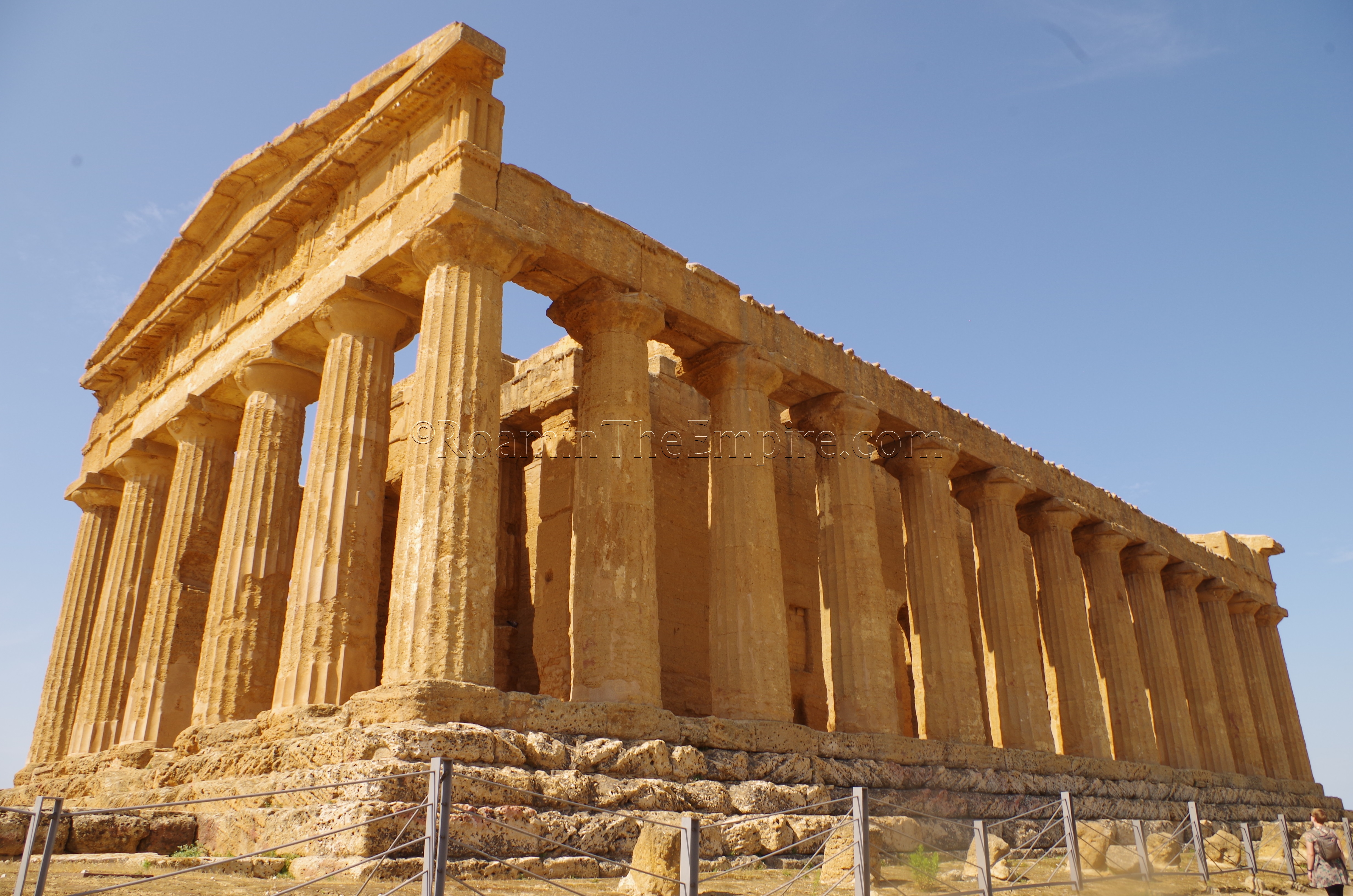
Most Recent Visit: June 2017.
The city of Agrigentum (modern Agrigento) was founded about 582 BCE as Akragas by Greek colonists from nearby Gela. The name Akragas came from one of two nearby rivers, the other being the Hypsas (the modern Sant’Anna River). Akragas was ruled by an oligarchic government initially, but sometime around 570 BCE a series of tyrants took over, starting with Phalaris. Phalaris greatly expanded the area of Akragas, including as far north as Himera, on the north coast of the island. Under the subsequent tyrants, the city prospered economically and became a production center for several crops, including grain and olives, and of livestock. In 488 BCE Theron came to power and continued to grow the political and military power of the city to perhaps its greatest extent. In 483 BCE Theron deposed the despot Terillus in Himera, effectively bringing the city under the control of Akragas, and prompting Terillus to appeal to the Carthaginians for assistance.
In 480 BCE the Carthaginians reputedly sent an army of about 300,000 to Sicily in response to Terillus’ request, though the numbers are often thought to be inflated and may not have been very much more than about 50,000. The Carthaginian army headed toward Himera and laid partial siege to the city. An initial battle between the Carthaginians and Theron resulted in a Carthaginian victory, but, Theron appealed to his brother-in-law, Gelon of Syracuse, for help, and a joint army of Theron and Gelon convincingly defeated the Carthaginians. The Greeks never attempted incursion into the Carthaginian territory and after the Carthaginians paid an indemnity to the Greeks, the status quo prior to the conflict was restored. The influx of wealth gained by Akragas from the conflict lead to a significant building program in the city, including the construction of the Temple of Olympian Zeus. Tradition held that the Battle of Himera took place on the same day as the Battle of Salamis, or sometimes the Battle of Thermopylae, but the likelihood of that seems slim.
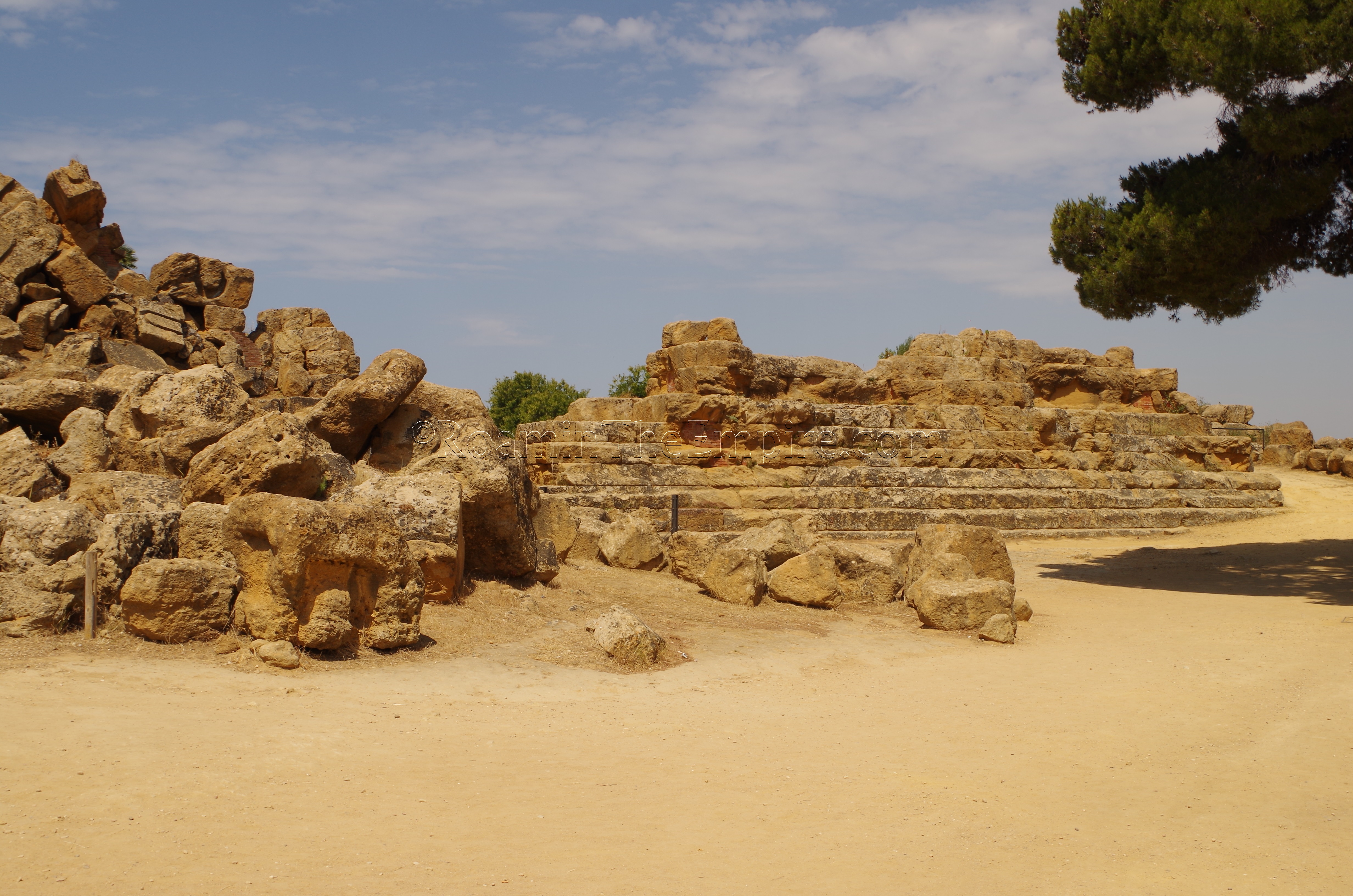
The son of Theron, Thrasydaeus, was unpopular with the people and he was overthrown after an unsuccessful attack on Syracuse, and a semi-aristocratic government and then a democracy was established at Akragas. Following the change in government, the city prospered and generally enjoyed a peaceful existence (remaining neutral in the Peloponnesian War) aside from Sicel revolt in the middle of the 5th century BCE in which some holdings of Akragas were captured. In 406 BCE, after renewed Carthaginian attempt to capture all of Sicily began a few years earlier in 410 BCE, Akragas was besieged by the Carthaginian forces after taking Himera and Selinus. After a siege of 7 months, the city fell and was sacked and destroyed. Akragas was effectively abandoned until shortly after a peace treaty was signed between Carthage and the Greek cities of Sicily in 341 BCE.
Colonists arrived in Akragas from Elea in 338 BCE, and though the city regained some prominence in the following years, it never quite regained its former prosperity. Though Akragas was technically east of the Halcyas River, the demarcation line of the eastern extent of Carthaginian power per the treaty, it seems to have been included in the Carthaginian sphere of influence. Hostilities were renewed between the Greeks and Carthaginians in 311 BCE when Aagathocles of Syracuse besieged Akragas. A Carthaginian counterattack broke the siege resulted in a defeat for Agathocles at the Battle of the Himera River. A peace treaty in 307 BCE between the Carthaginians and Syracuse resulted in the whole of the island, aside from Syracuse, coming into the sphere of Carthaginian influence, though cities like Akragas still had a large degree of autonomy.
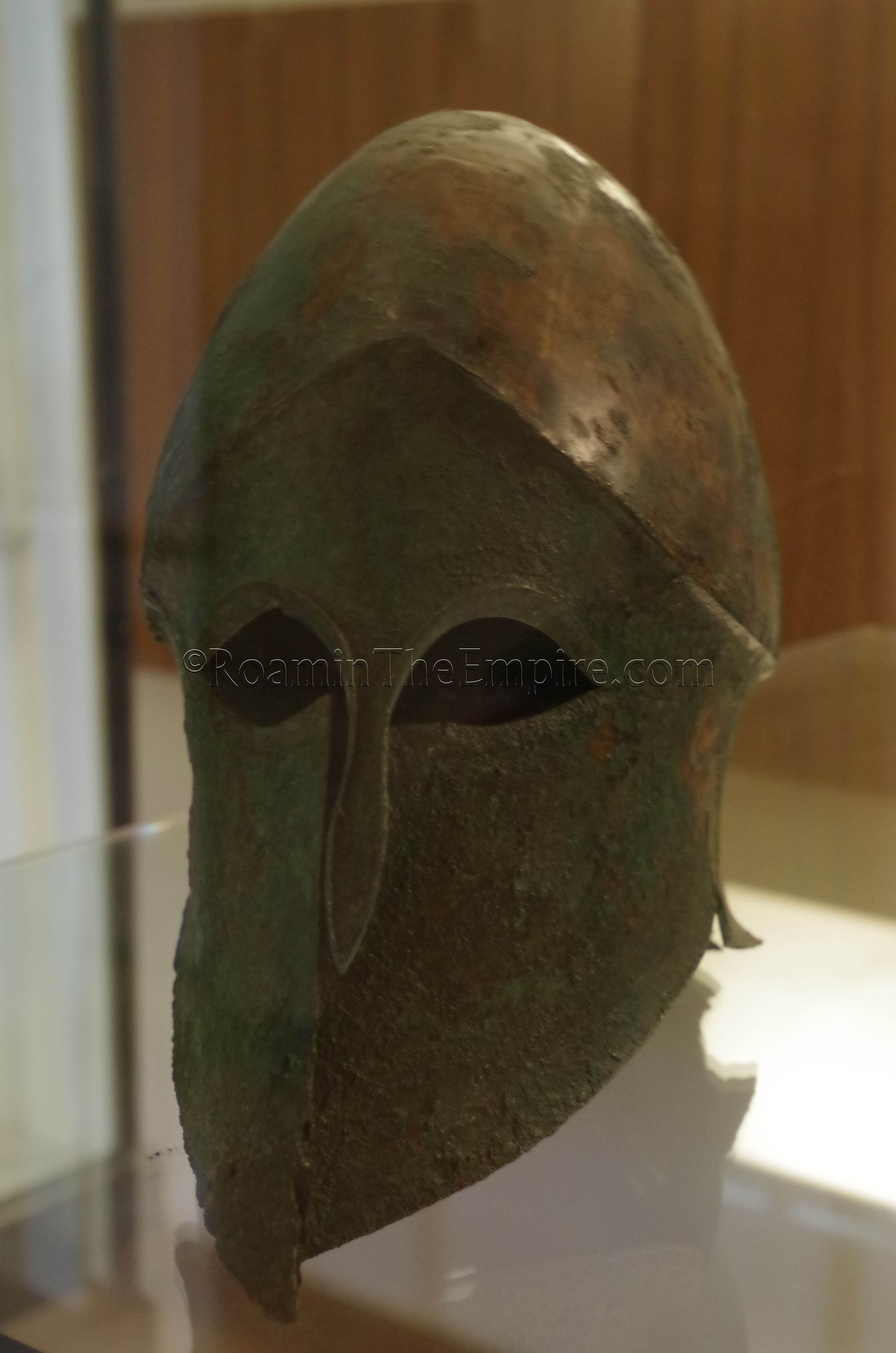
About 286 BCE, the tyrant Phintias came to power in Akragas and attempted to re-exert the power and influence of the city during his reign, but with little success. During Pyrrhus’ expedition to Sicily in 276 BCE, Akragas was conquered by the general, but shortly afterward, after Pyrrhus was forced to give up his ambitions in Sicily, the city once again reverted to Carthaginian control. When hostilities broke out between Rome and Carthage in the form of the First Punic War, Akragas became the focal point of the first major battle between the two powers.
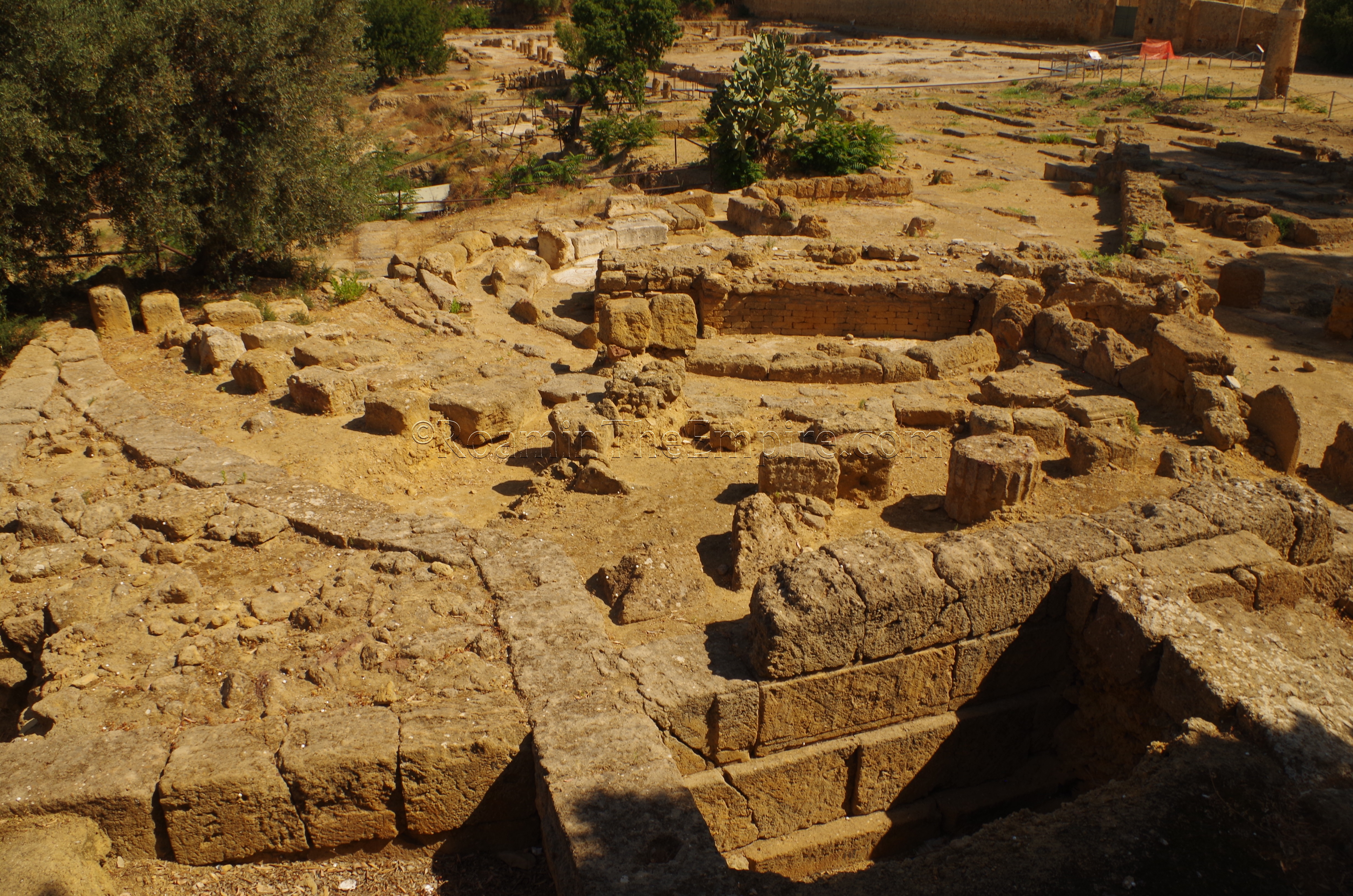
By 262 BCE, it had become apparent that Akragas would be used as a primary base of operations against the Romans if the war, which had technically been going for two years but resulted in little more than skirmishes since, ever began in earnest. Before the Carthaginians could send troops, two consular armies under Lucius Postumius Megellus and Quintus Mamilius Vitulus converged on Akragas and laid siege to the city. With a relatively small garrison at the city, the Carthaginian commander, Hannibal Gisco, initially declined to sally out and offer battle to the Romans, leading the Romans to take a more relaxed approach to the siege, believing the Carthaginians had no will to fight them. Shortly after making their camp, the Romans began loosely organized and poorly guarded foraging activities around Akragas. Seeing an opportunity, Gisco launched an attack first on a foraging party, and then on the unprepared Roman camp. Though the Romans eventually repulsed the attack, it was with substantial losses on their side, and relatively substantial losses on the side of the Carthaginians, who had limited numbers of troops to draw on. After that episode, the Romans took better precautions with foraging and built up a circumvallation line around the city to blockade it, as it was not a coastal settlement and had no direct access to a port.
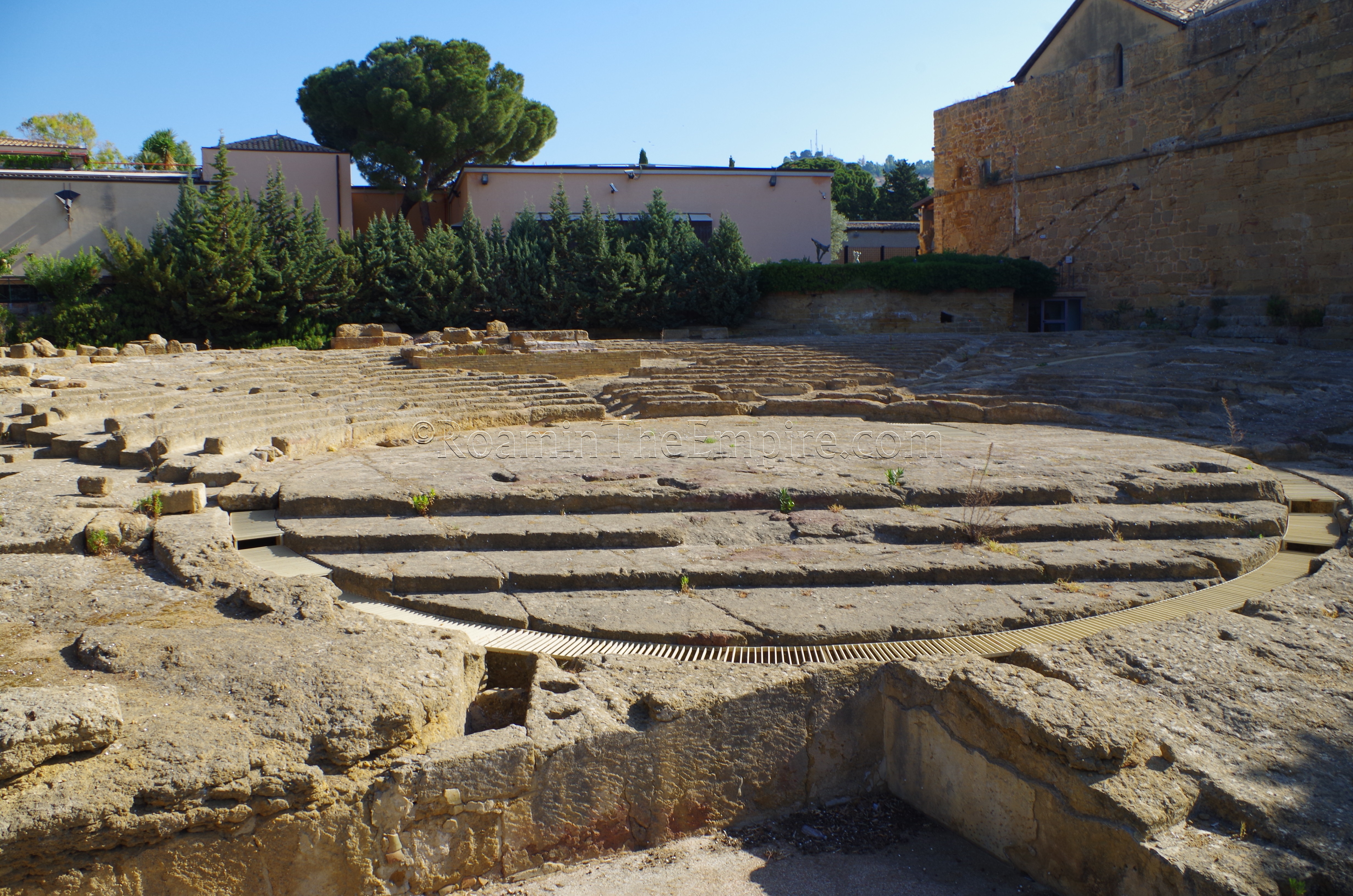
Five months into the siege, the food situation inside the city became increasingly dire, and Gisco appealed to Carthage for reinforcements to break the siege. A force relatively equal to the Romans, or possibly slightly numerically superior, was sent to nearby Herakleia Minoa. As the Carthaginians moved on Akragas, a cavalry force of Numidians managed to lure the Roman cavalry into an engagement with the main Carthaginian force, inflicting heavy losses on the Romans. The Carthaginians then set up camp near the Romans to await battle. As the food situation had become perilious inside the city, so it had become with the Romans as well, as the uncommonly large double consular army had burned through provisions in the immediate area. Because of this, the Romans too were eager to force a conclusion to the engagement, but, the main Carthaginian force refused. For two months the two forces traded skirmishes, but did not fight a pitched battle, but both the Romans and the Carthaginians inside the besieged city were desperately low on food and finally deployed to fight.
Sources differ on the events of the battle, but according to Polybius, the Romans broke the Carthaginian first line and caused the army to rout, resulting in significant losses on both sides. With no hope of the siege now being broken, the Carthaginian garrison attempted to flee the city under cover of darkness, and was mostly successful in doing so. With no defenders at the city, though, the Romans entered the city with no resistance and proceeded to sack the city and sell its inhabitants into slavery. The success apparently gave the Romans the will to expand the conflict against the Carthaginians and seek to force them from the island. The city was recaptured by the Carthaginians in 255 BCE, but instead of attempting to hold the city, they razed it. Following the conclusion of the First Punic War in 241 BCE, the city passed into Roman hands with the rest of the Carthaginian holdings on the island.
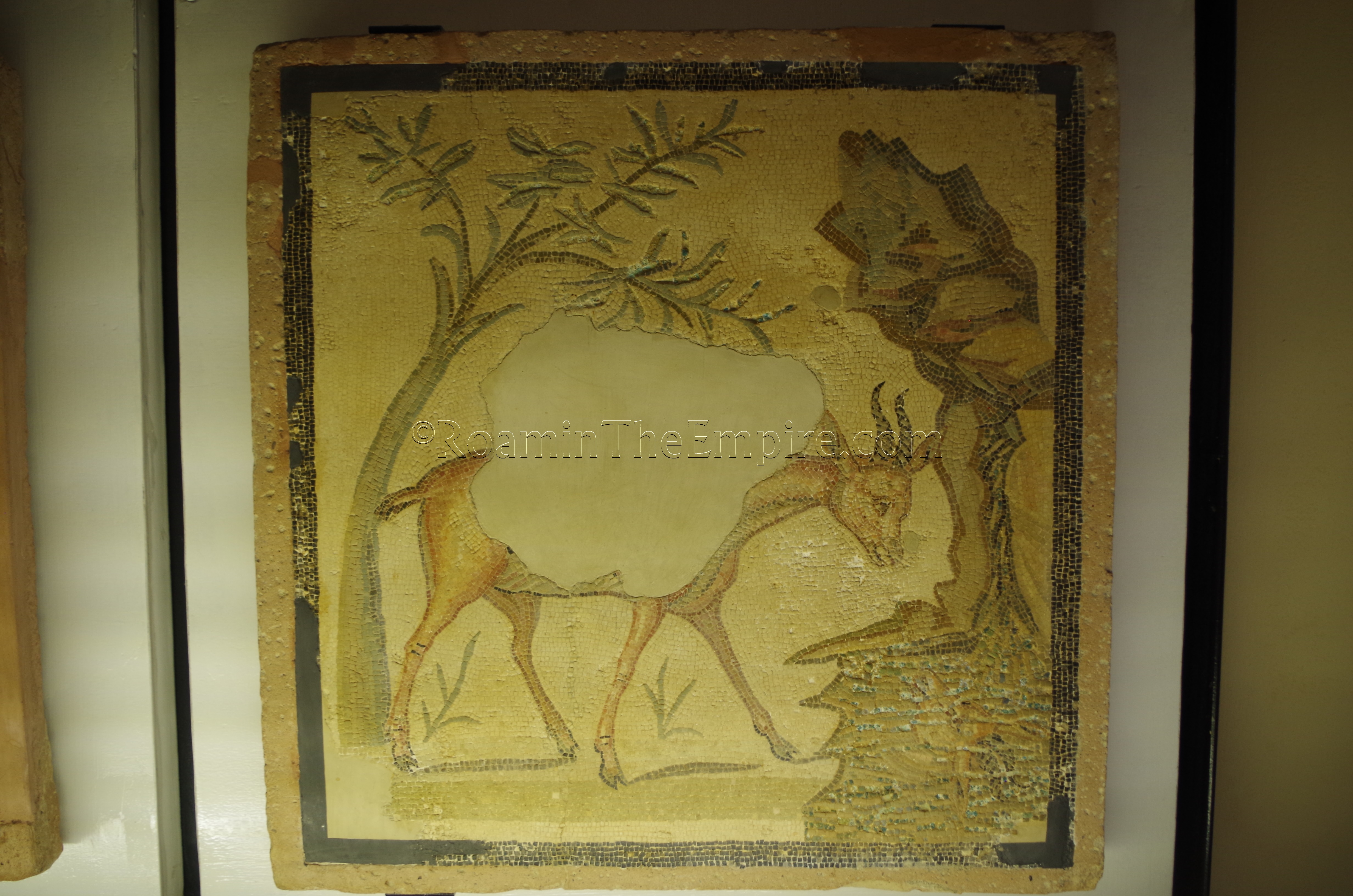
During the Second Punic War, in 213 BCE, the Carthaginians made a play to regain control of Sicily, again landing an army at Herakleia Minoa and marching it to Akragas, where they were likely openly welcomed into the city. The Carthaginians enjoyed some success, but in 210 BCE the Romans once again moved on Akragas in a bid to drive the Carthaginians off the island. The Romans besieged the city, and a power struggle between the Carthaginian commander Hanno, and a Libyan-Phoenician commander named Muttines resulted in the latter betraying the city to the Romans by opening the gates. Though Hanno escaped, the garrison was captured and the inhabitants were once again sold into slavery. The capture effectively ended Carthaginian ambitions to control Sicily, and the Romans renamed the city Agrigentum.
The city essentially lost the autonomy it had enjoyed under the Carthaginians and even under the Romans between the First and Second Punic Wars, and was administered as a civitas decumana, though it retained Greek civic offices (and remained a strong center of Greek population). Under the Romans the city seems to have prospered and received colonists in 207 BCE and again sometime during the reign of Augustus. It may have gained the title and privileges of a colony under Augustus, but seems to have lost them at some point, as it is not mentioned by Pliny or Ptolemy as one of the colonies on the island. Agrigentum is mentioned by Cicero as being one of the wealthiest cities in Sicily with an important trading port, and during the imperial period the city was both an agricultural and textile production center. Agrigentum apparently suffered from under Verres, and was a target of his mismanagement, even going so far as to steal a statue of Apollo from the Temple of Asclepius, and attempting to steal a statue of Hercules from the Temple of Hercules. After the early empire, though, little mention is made of Agrigentum, and it seems to have declined in importance toward the end of the Roman Empire.
Getting There: Being the major city in the region, Agrigento is pretty well connected to other major cities in Sicily via rail and bus. The closest airports are essentially equidistant (by driving) in Palermo and Catania. There are several direct trains each day from Palermo that take about 2 hours and cost 9 Euros. The journey from Catania by train is typically about twice the time and a little more expensive, as well as involving a change. From Catania it’s probably a better option to take the bus, which takes about 3 hours and costs 13.40 Euro one way. Schedules for the trains can be found at TrenItalia, and for the buses at Sais Transporti. Most of the remains of the ancient city, as well as the museum, are south of the modern city in the Valle dei Templi, but the area is the major tourist draw, so it is well signed and connected by buses from the modern city center. The best place to park is south of the western part of the Valle dei Templi site, and there is a nearby entrance to the site or taxi shuttles up to the entrance near the Temple of Juno, the highest point.
At the northern most extent of the Valle dei Templi area, and outside of the actual archaeological park is the Museo Archeologico Regionale “Pietro Griffo”. The museum is located officially at Contrada San Nicola 12. It is open Tuesday through Saturday from 9:00 to 19:30 and on Sundays, Mondays, and holidays from 9:00 to 13:30. Admission to the museum is 8 Euros for just the museum, or is 13.50 Euros for a combination with the Valle dei Templi; which is valid for a few days. Admission is free on the first Sunday of the month.
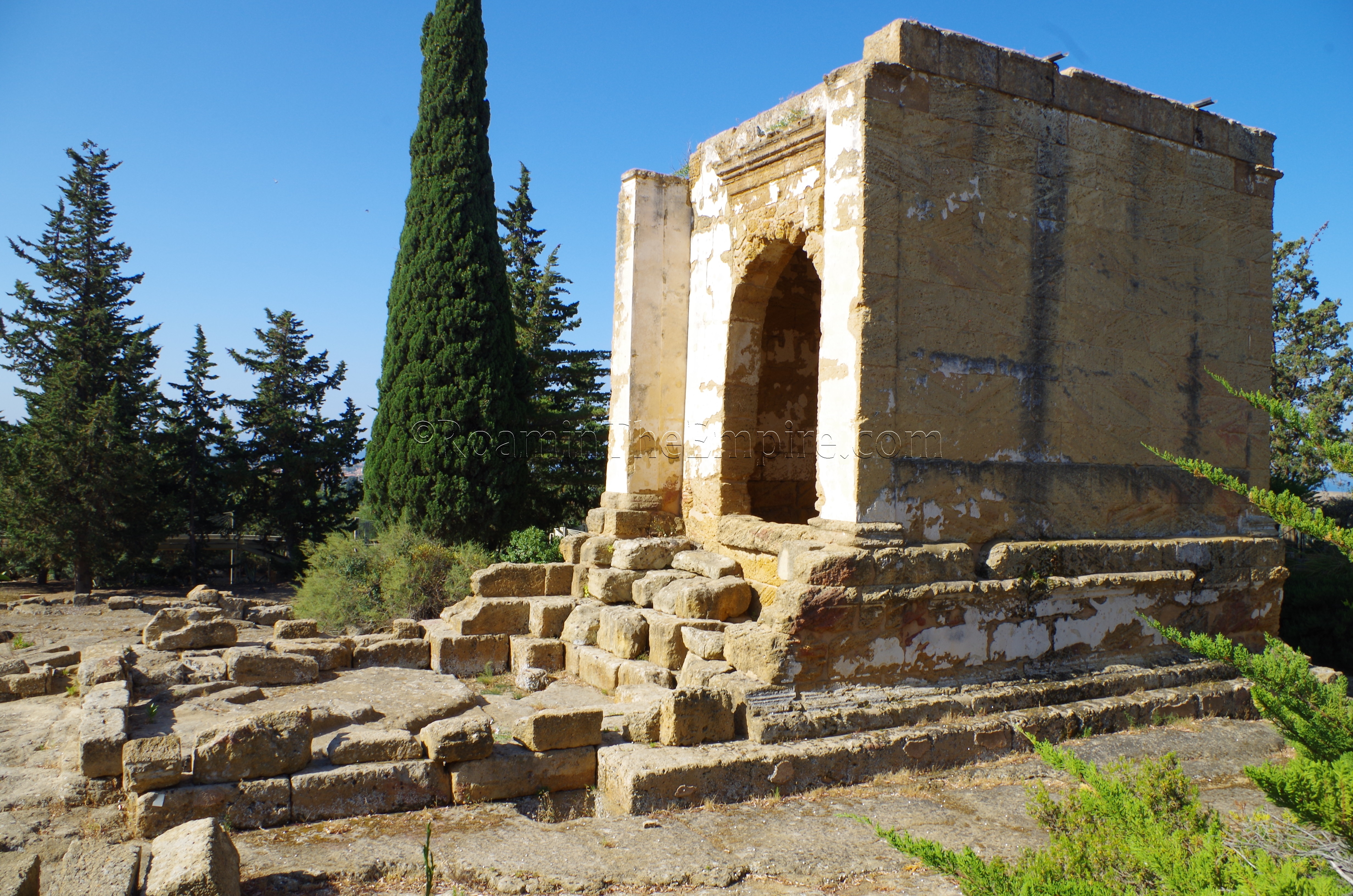
The grounds of the museum are on the agora/forum area of Agrigentum. In front of the museum, flanking the path into the museum, are a number of ancient buildings. The first is the ekklesiasterion, a small theater-like construction used for general assembly meetings of free citizens during the Greek period. It seems to have been constructed in the 4th or 3rd century BCE and could hold about 3,000 people. For a time after the Roman acquisition of the city, the ekklesiasterion may have performed the functions of the comituim. By the 1st century BCE, however, the ekklesiasterion seems to have fallen out of use and was covered with dirt, allowing for the construction of the adjacent temple, the so-called ‘Oratory of Phalarys’. The most likely use of the building seems to be as a temple, though any associated deities are unknown, though alternative interpretations have been that it is a tomb or heroon. The temple appears to have been constructed sometime between the 1st century BCE and 1st century CE. Some of the stucco still remains attached to the building. To the south of both of these, and the walkway, are the remains of a Roman dwelling with some intact mosaics.
The museum itself is quite extensive with over 5600 artifacts on display in 18 rooms. The amount of material in some areas of the museum, particularly with regard to ceramics is incredible. The vast majority of it comes from the Greek era of the city, but there is room devoted to material from the Roman/Hellenistic Quarter of Agrigentum as well as Roman material in the inscription and necropolis rooms. The collections are organized thematically and chronologically, with some rooms covering time periods, while other rooms display objects in a thematic grouping.
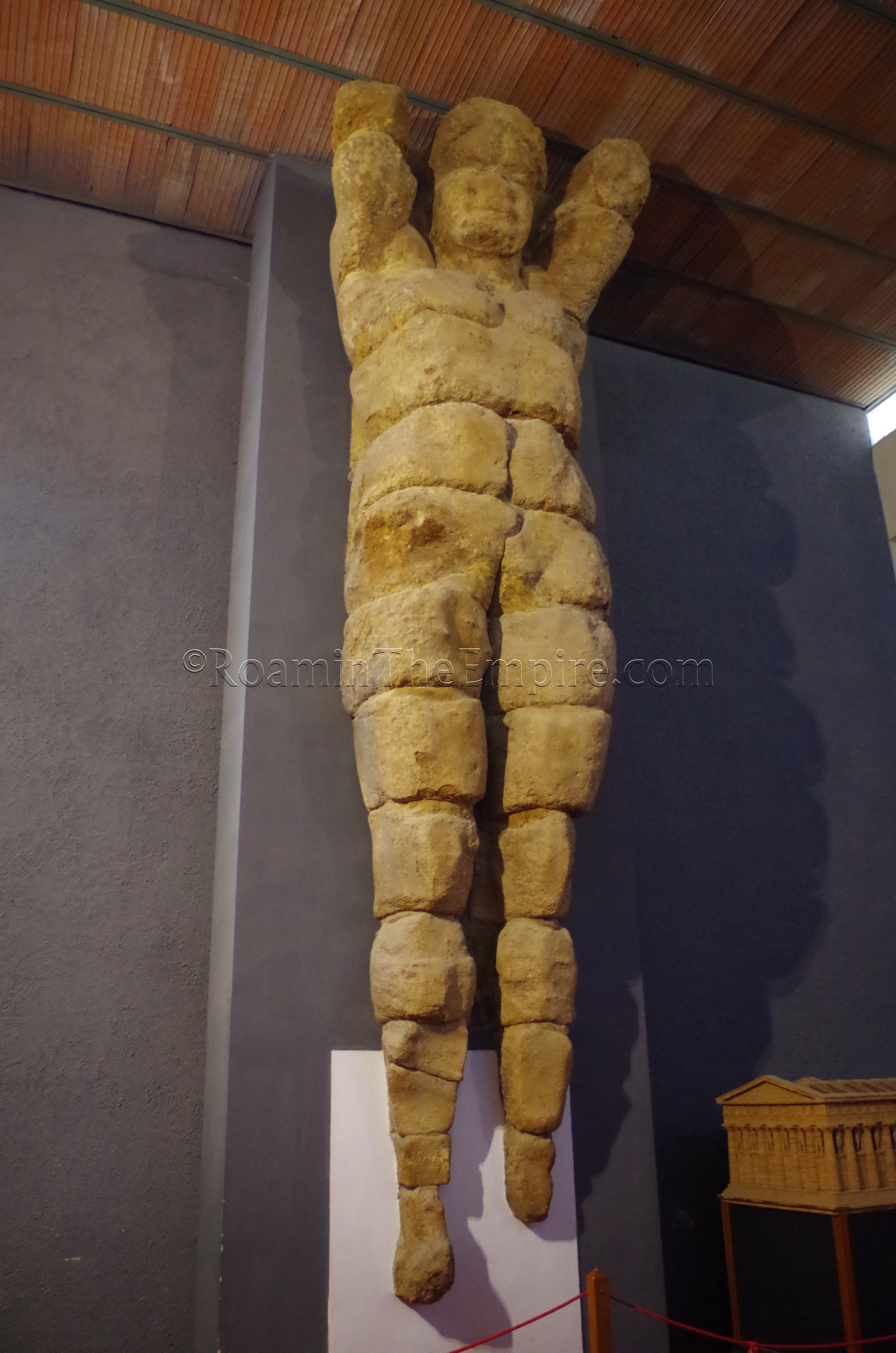
Among some of the highlights are the room that displays a full telamon from the Temple of Olympian Zeus, as well as the heads of some others. A reconstruction and information panels help to put the pieces in the context of the original building. There are a few larger sculptural pieces including the Ephebe of Agrigento (also called the Agrigento Youth), one of the centerpieces of the collection. A few Roman era mosaics and some well-preserved/conserved Attic red figure vases are also among some of the more aesthetically interesting pieces.
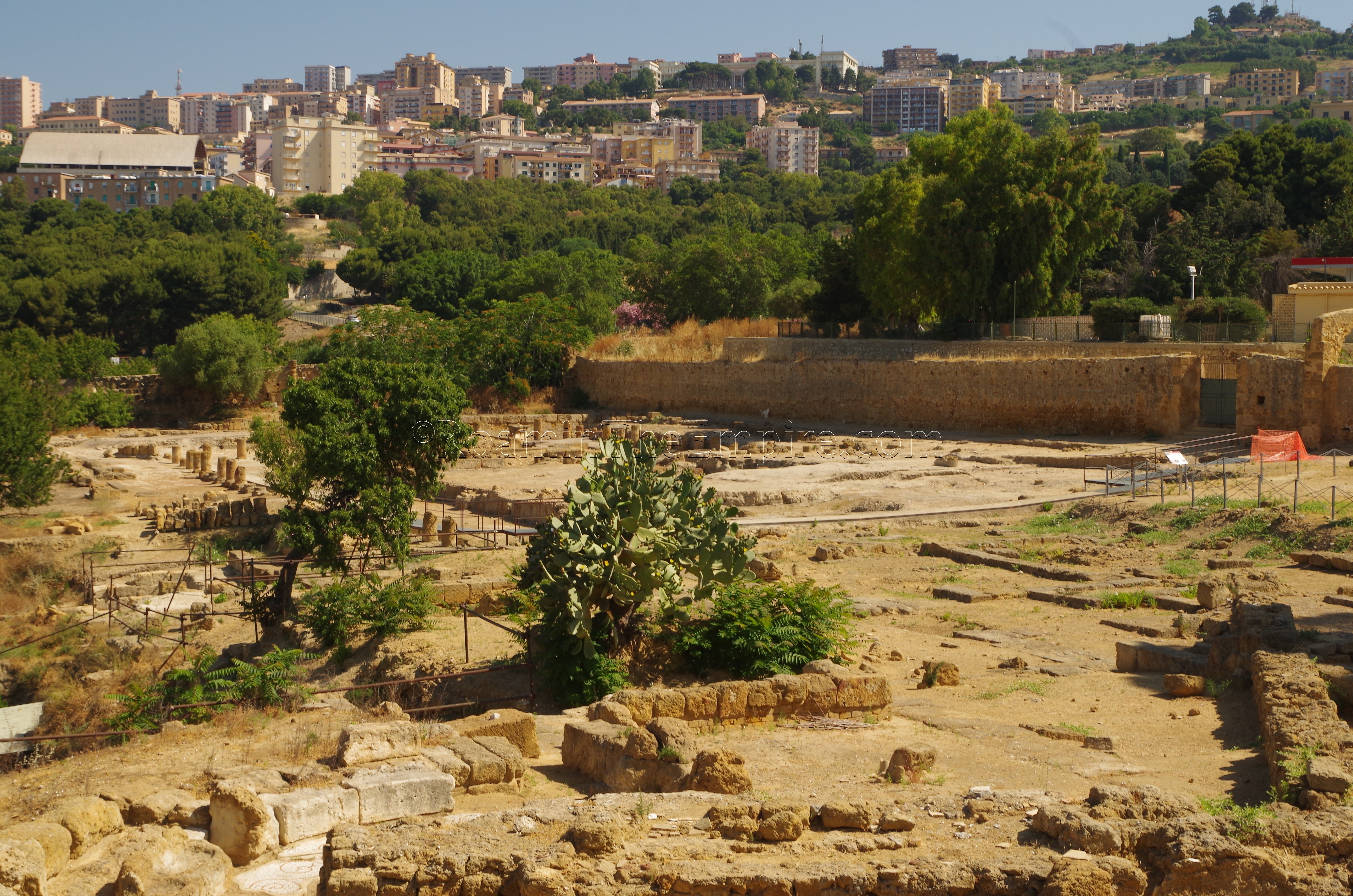
Behind the museum is another section of the forum/agora that includes the bouleuterion and a Roman era temple. Unfortunately that area was closed off and inaccessible, though the museum did open up the doors that led out on to a balcony that overlooks the area, allowing for a relatively unobstructed view.
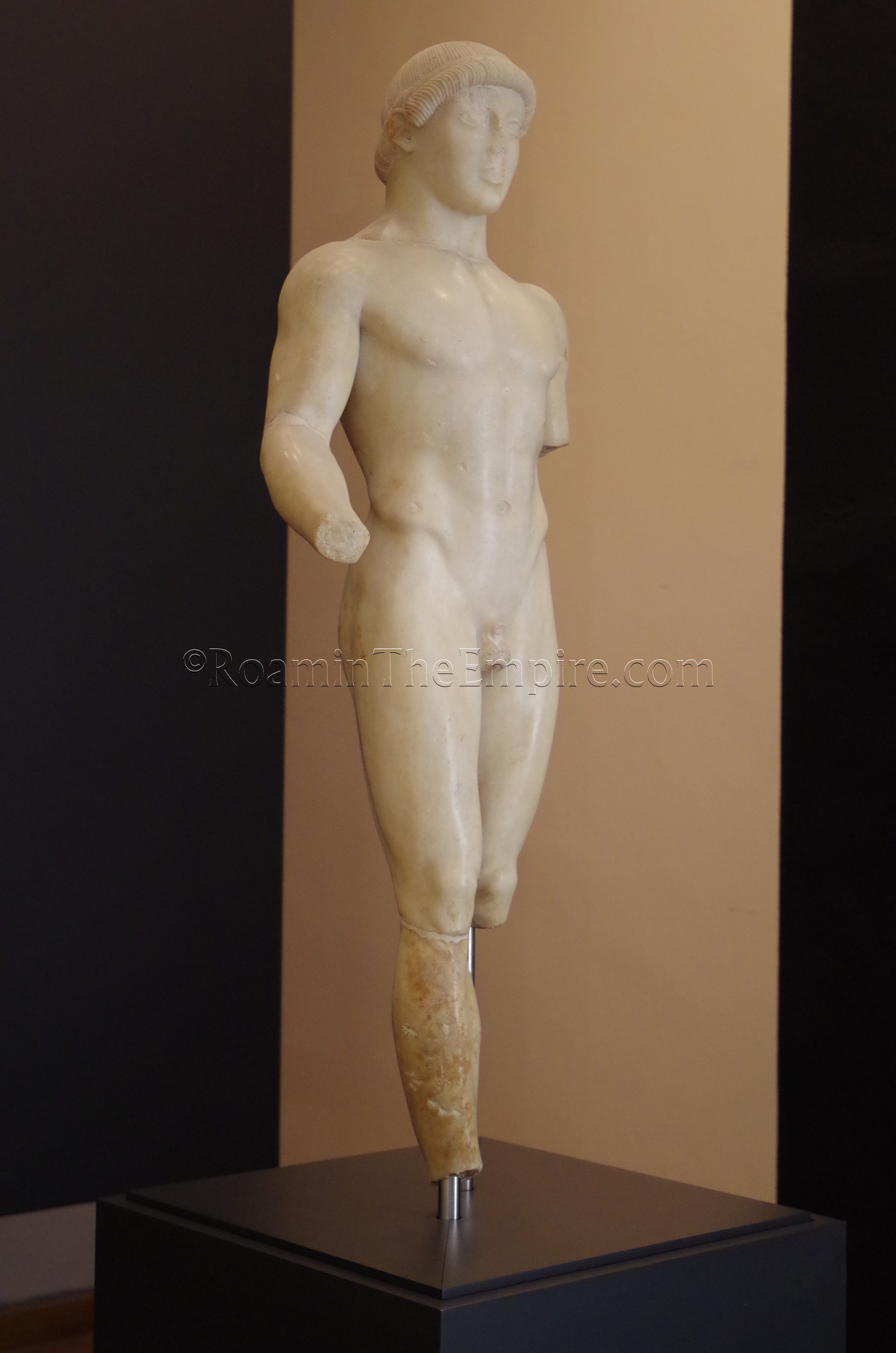
Most of the artifacts have tags in both English and Italian, but there are some that are only in Italian. There are a number of informational signs regarding various aspects of the archaeology of the area. The displays are done quite well and, despite the obvious wealth of material, it doesn’t often feel overcrowded with objects put out for the sake of being put out. I was unfortunately on a bit of a time crunch, as the previous day, when I visited the Valley of the Temples, was Republic Day and both the museum and archaeological site closed at 13:30, foiling my plan to see the archaeological site in the morning and peruse the museum at leisure in the afternoon and evening. I spent about an hour and fifteen minutes at the museum, but could have easily spent twice that if I were not essentially rushing through. The museum is certainly well worth the visit and helps to put some of the archaeological remains in context.
Valley of the Temples Covered In Agrigentum Part II Here
Sources:
Diodorus Siculus, Bibliotheca Historica, 11.25, 11.53, 11.76, 11.91, 12.8, 13.80-91, 13.108, 13.114, 14.46, 14.88, 15.17, 16.9, 19.70-71, 20.30-32, 20.56, 20.62.
Goldsworthy, Adrian. The Fall of Carthage. Cassel, 2000.
Holloway, R. Ross. Archaeology of Ancient Sicily. Routledge, 1991.
Hornblower, Simon, and Antony Spawforth. The Oxford Classical Dictionary. Oxford University Press, 1996.
Livy, Ab Urbe Condita, 24.35, 25.40-41, 26.40.
Pliny the Elder, Naturalis Historia, 3.14.
Plutarch, Dion, 25-26, 49.
Plutarch, Timoleon, 35.
Polybius, Historia, 1.17-20, 9.27.
Smith, Christopher John. Sicily from Aeneas to Augustus: New Approaches in Archaeology and History. Edinburgh Univ. Press, 2007.
Smith, William. Dictionary of Greek and Roman Geography. Walton & Murray, 1870.
Stillwell, Richard, William L. MacDonald, and Marian Holland. McAllister. The Princeton Encyclopedia of Classical Sites. Princeton, NJ: Princeton U Press, 1976.
Thucydides, Histories, 6.4, 7.32-33, 7.46. 7.50, 7.58.
Vergil, Aeneid, 3.704
Xenephon, Hellenica, 1.5.21.


